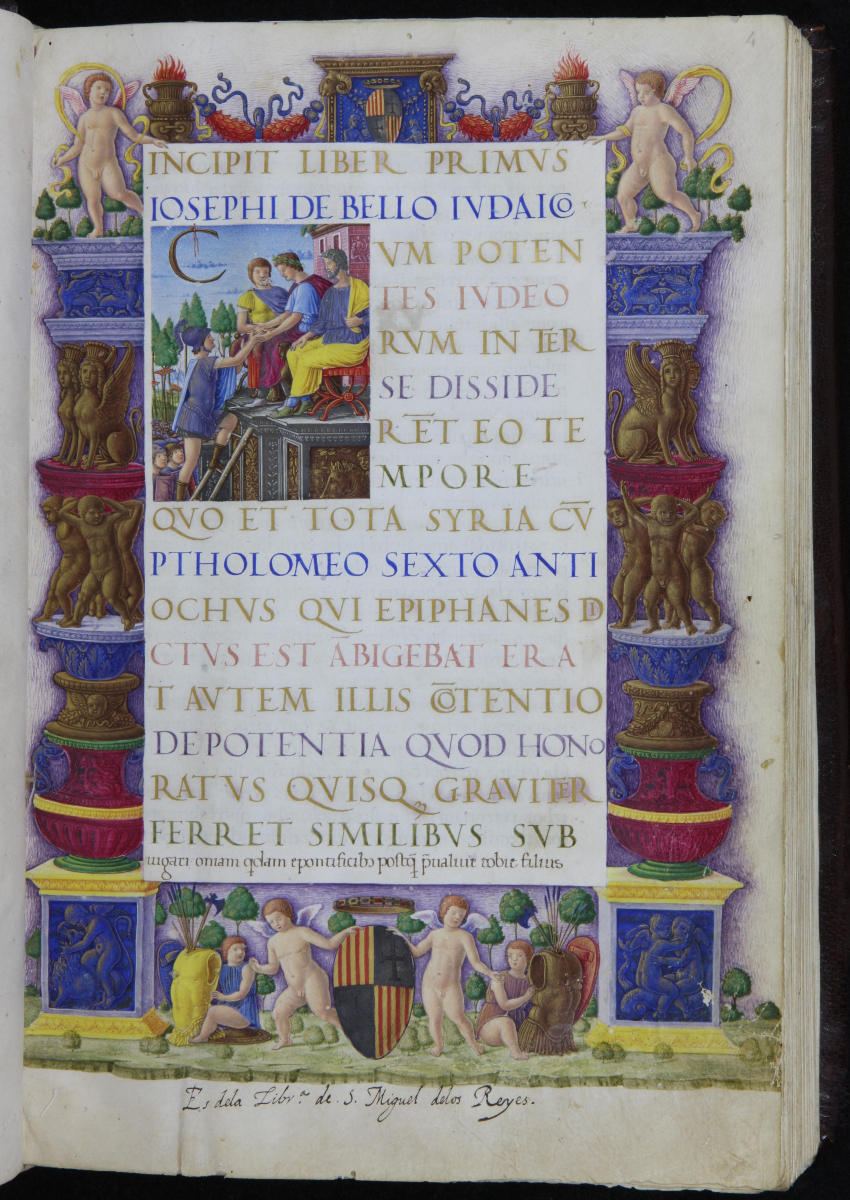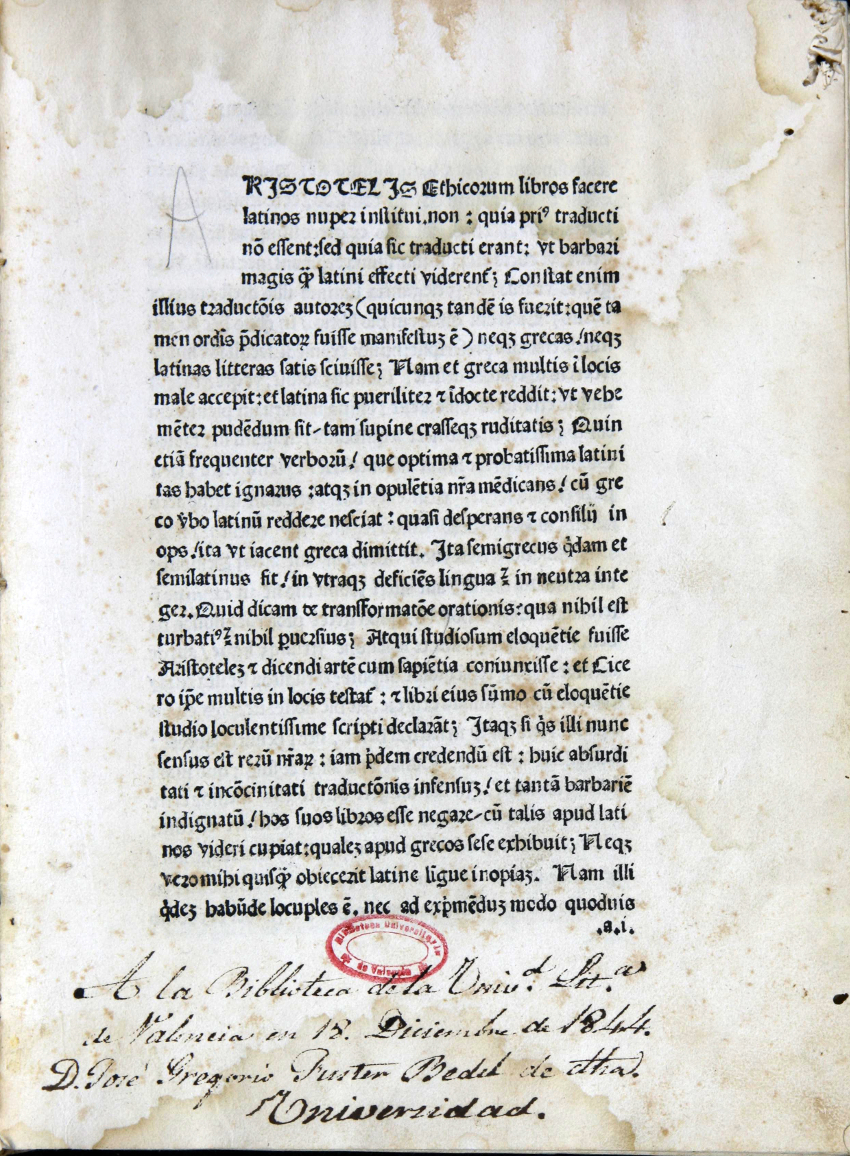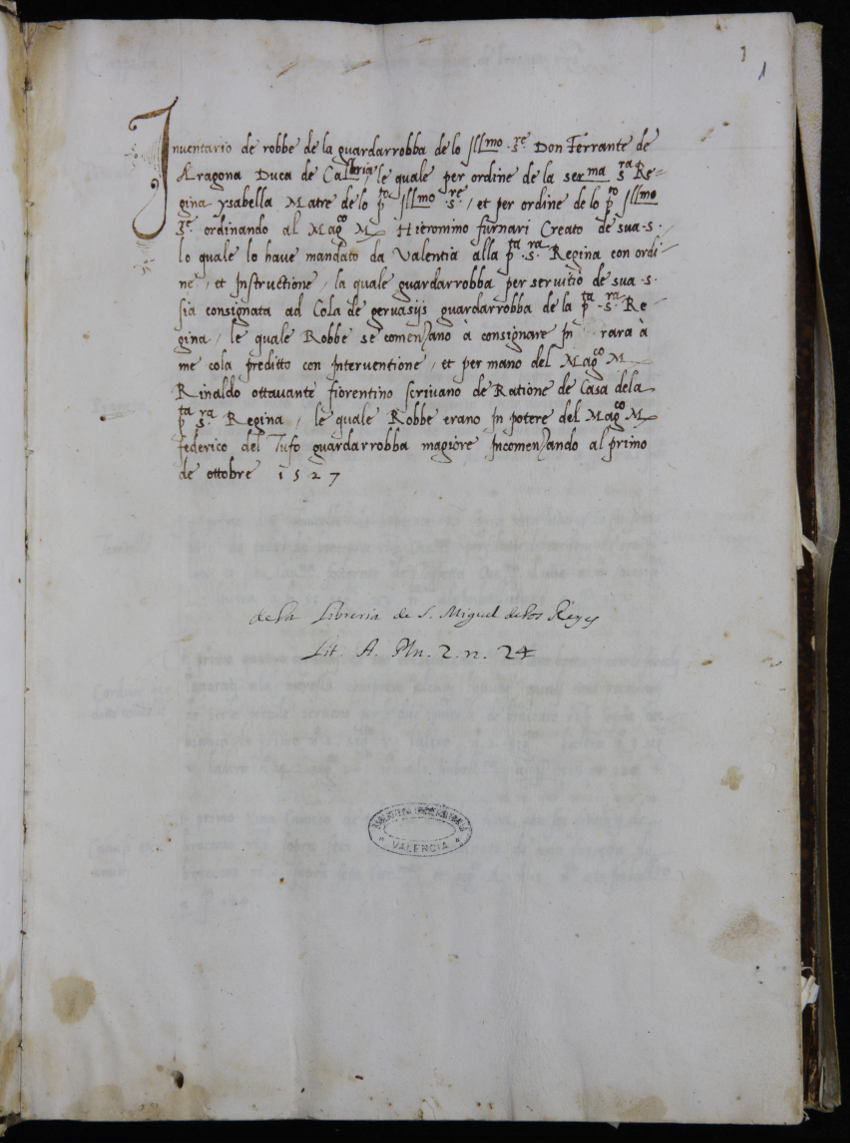![Pàgina del llibre: Lorenzo Valla, 1407-1457, <i> Elegantiarum Laurentii Vallae</i>. [Nàpols], [ca. 1473]](/recursos/fatwirepub/ccurl/155/627/DETALL 850.jpg)
Lorenzo Valla, 1407-1457, Elegantiarum Laurentii Vallae. [Nàpols], [ca. 1473]
The Universitat de València has organised an exhibition on the occasion of the 25th anniversary of the Societat Bibliogràfica Valenciana Jerònima Galés (SBVJG) and the 520th anniversary of the foundation of our university. The exhibition showcases how both entities have expressed their devotion for books and culture since they were founded.
The Royal Spanish Academy (RAE) has a simple and short definition for the words “bibliophilia” and “bibliophile”. According to the institution, it is the “fondness for collecting books, especially those that are rare and unusual”. However, bibliophilia is more than a simple sentence for booklovers. They consider it to be the sometimes excessive passion towards original art objects that represent not only knowledge but also incredible beauty.

It is not exaggerated to say that there are as many passions as bibliophiles. Each one has a book preference depending on different aspects: the binding of the book, its beautiful calligraphy, its magnificent illumination, the author’s dedicatory, its signature or even the place of origin of the book. A bibliophile feels admiration for perfect and unusual editions, especially Editio princeps, which are very valued within bibliophilia. Nonetheless, a bibliophile also studies his books. In fact, he is an expert on the books that he loves.
Generally speaking, anyone who loves and buys books in order to take care of them is a bibliophile. This is what differentiates them from anyone else. This distinction makes them feel excited and proud of it. On the one hand, bibliophiles like to own the works that they love. On the other hand, they also admire to observe them in old libraries.
The goal of the exhibition is to display the history of bibliophilia and the main Valencian bibliophiles from the Renaissance to the current day. In this way, the exhibition invites the attendees to reflect on the meaning of loving books.

The materials of the exhibition, which are collected in the Historical Library and the Historical Archive of the Universitat de València, show us the history of the books over time, their different owners, the places where they have been collected, the business transactions that they have been through and even how they were saved in extremis from being burned or eaten by beehive mites.
The selected materials come from different models of bibliophilia. For instance, aristocratic and royal bibliophilia is represented by the Duke of Calabria. Furthermore, pieces of work that are related to the role of bibliophiles are exhibited, too. Thanks to donations and the legacy of their collections, they have established the foundations of the new state library, whose symbol is Francisco Pérez Bayer. Other models are associated to the image of bibliophiles-librarians during the first stages of liberalism, such as the Salvá. Bibliophiles with a modest background that knew how to take advantage of the book market conditions after the Spanish confiscation are addressed as well, such as the maintenance man José Gregorio Fuster. Additionally, the bibliophiles that encouraged literacy, such as María Moliner, or the activities of the bibliographical societies in the 20th and 21st centuries (Acción Bibliográfica Valenciana, Societat Bibliogràfica Valenciana Jerònima Galés) have their space in the exhibition, too.

The exhibition also deals with certain critical historical situations that have affected the world of books and libraries. Some of these situations were Inquisition and the ban or expurgation of publications, the French invasion during the Peninsular War, confiscations of libraries in convents and monasteries, foreigners taking Spanish bibliographical heritage off the country or the Spanish Civil War, including the procedures of destruction, confiscations and return.
The Universitat de València and the SBVJG exhibit a selection of works that represent this illusion of admiring, finding and owing, if possible, beautiful bibliographical books. These books are part of the identity of the bibliophiles, who collect and are fascinated by them because they are able to leave a very indelible footprint in all of us.











